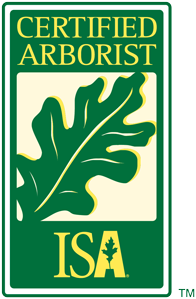Yes, you can become a landscape maintenance professional. Just consider the following eight steps. I originally published this list in a post on LinkedIn. This is a new, improved version. It came to life as I arrived at a crossroads early in 2016 and had to make a decision. Do I continue with my temporary full-time municipal parks laborer position or accept a better paying, full-time senior supervisor position in the private sector. As I reflected on my own sweaty 16-year journey from rookie at a landscape maintenance corporation to Red Seal Journeyman Horticulturist, the list was born. Feel free to add comments or ask for help.
Practice, practice
New landscape maintenance workers inevitably mow miles of lawns but the idea is to get it down quickly and then move on to all of the other machines. Edgers, blowers, bedwork and power shears. Ask for training. Face your fears. Gain skills and confidence. Add value to your company. The goal is a quick progression from mowing to all of the other skills.
Plant ID
Don’t dismiss this crucial skill. Start on day one. Keep a notebook, take pictures with your smartphone. Learn only botanical names. Some plants have multiple common names so don’t waste your time. All nurseries deal in botanical names. Tests use botanical names.
Plant knowledge is critical for proper care and pruning. To get you started I created an eBook called “Common strata plants, A Guide for West Coast Landscapers“. Message me for a copy.
Get tested
If you live in Canada or the US, you can get tested and become a certified landscape technician. The test validates your skills and shows employers and clients that you have the required minimum skills to do a great job for them. Going through the written and practical tests is a humbling experience. Getting my certificate felt great! It will boost your confidence and your income. Get your employer to cover the fees.
I invite all prospective Lower mainland candidates attempting the ornamental maintenance module to contact me for a private review session at very reasonable rates. Save money and time by not making the same mistakes I did.
Hug trees
You only need two field seasons to qualify to write the ISA (International Society of Arboriculture) exam. It’s recognized internationally and prepares you to care for trees in our landscapes. Proper pruning and avoiding conflicts with landscape machines are two critical issues. So is safety. Plus trees are beautiful and provide numerous ecosystem services for free. They deserve a hug!
Mentors
Remember, the goal is quick acquisition of new skills. Get your foreman and senior workers to help you. I spent one season working under a brilliant municipal gardener and I learned a lot. It took one nice comment from her for me to walk into my Red Seal Journeyman Horticulturist exam challenge with confidence. I also read the works of brilliant horticulture professionals. Look for mentors from the beginning.
Industrial athletes
Your body is a money-maker so take care of it. Everything is neatly summarized in this ISA article. Read it. Study it. Green workers may not think of themselves as athletes but consider the daily physical output required on the job. I would just add a regular exercise program based on sports you enjoy. I take part in road and trail running races. Find your favorite sport and do it. Regularly.
Seal it with Red
Landscape horticulture is a Red Seal trade in British Columbia. The recommended procedure is to sign up for an apprenticeship with a good company. Learn the trade in the field and complete schooling in winter. Four years; 9700 hours required. This is consistent with the 10,000 hour idea developed by Anders Ericsson and made famous by the writings of Malcolm Gladwell. See the latest book by Ericsson. Make the hours count.
If you possess the required documented hours in the field, you can challenge the exam. I did. It wasn’t easy but with field experience, one day preparation course and some study, I passed. You will too. Journeyman status is critical to your career success. Municipal park departments now demand it. In private industry you separate yourself from other workers and management is a possibility.
Kaizen
Kaizen is a Japanese term for continuous improvement. Never stop learning. Read new books, attend conferences, subscribe to journals and stay in touch with your mentors. Keep reading this blog. The goal is to be better than you were yesterday.
Follow the steps above and enjoy your green career!








